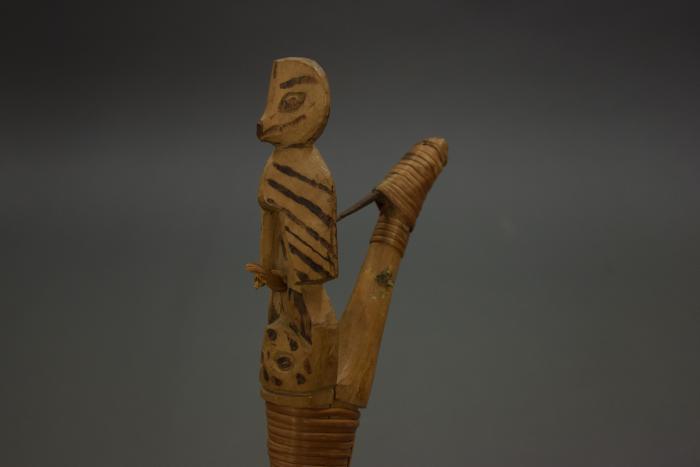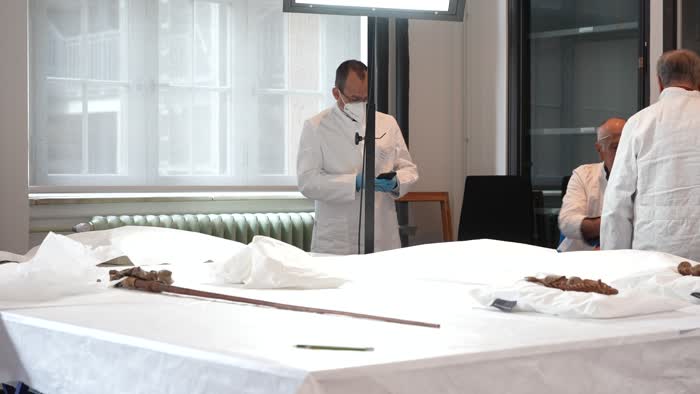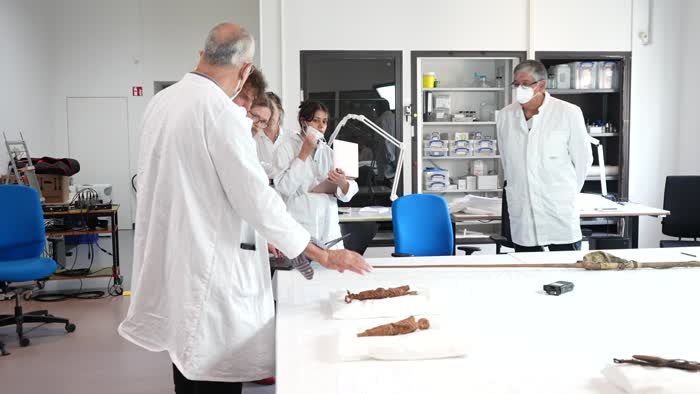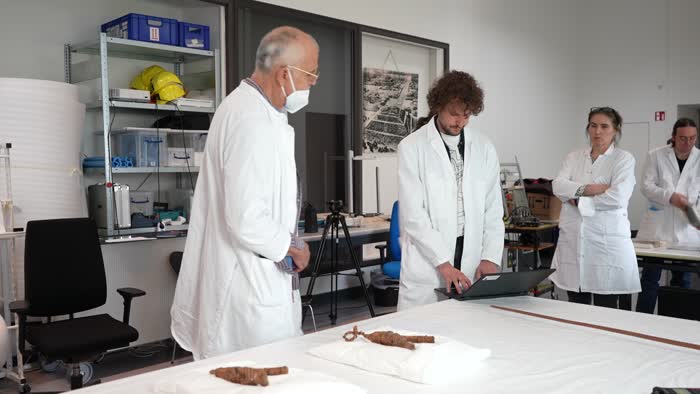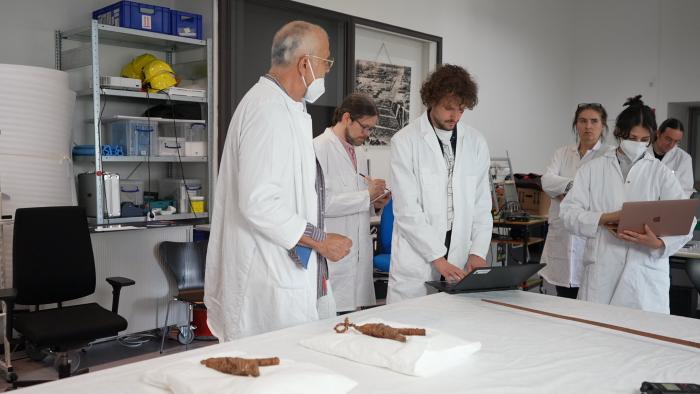Fishing hook for halibut
John F.C. Johnson (Contributor)
William Smith (Contributor)
Deborah McMullen (Contributor)
Pamela Smith (Contributor)
Dawn Randazzo (Contributor)
Raymond Eric Clock (Contributor)
William Smith (Contributor)
Deborah McMullen (Contributor)
Pamela Smith (Contributor)
Dawn Randazzo (Contributor)
Raymond Eric Clock (Contributor)
John Johnson: Looks like a tlingit hat.
William Smith: maybe when they were in qayaqs, they had to stick a harpoon in the back to tow the sea otters back.
Deborah McMullen: Might have been specifically for digging it into the ground according to the tides.
John Johnson: The halibut swims at a certain level above the ground, which matches the height of this hook.
John Johnson: Person with nickname "sunshine" (Ted C.): Kenai people had a designated area for fishing, they were coming in qayaqs and fishing for halibut.
John Johnson: The spritual dimensions of the carved figures has been researched in the book C. Smythe, Doing Battle with the Halibut People.
John Johnson: The bottom of the hook looks like the top of a Tlingit hat.
John Johnson: Tied with split spruce root.
Deborah McMullen: Were the hooks specifically for jigging? Could it be used for also pulling the halibut behind the boat?
John Johnson: The hooks would float above a sinker rock (IV A 6251) that would sink to the ocean floor as halibut are ground feeders.
William Smith: When the tide is out the table is set. (Tlingit saying)
Pamela Smith: The halibut hooks are not wedged but woodburned.
Dawn Randazzo: Would be interesting to compare to other Eyak artifacts to see if there also was similar wood burnings.
Raymond Eric Clock: Commercial fishermen are going back to the old style of circle hooks as the Halibut hooks say on the hook longer.
William Smith: maybe when they were in qayaqs, they had to stick a harpoon in the back to tow the sea otters back.
Deborah McMullen: Might have been specifically for digging it into the ground according to the tides.
John Johnson: The halibut swims at a certain level above the ground, which matches the height of this hook.
John Johnson: Person with nickname "sunshine" (Ted C.): Kenai people had a designated area for fishing, they were coming in qayaqs and fishing for halibut.
John Johnson: The spritual dimensions of the carved figures has been researched in the book C. Smythe, Doing Battle with the Halibut People.
John Johnson: The bottom of the hook looks like the top of a Tlingit hat.
John Johnson: Tied with split spruce root.
Deborah McMullen: Were the hooks specifically for jigging? Could it be used for also pulling the halibut behind the boat?
John Johnson: The hooks would float above a sinker rock (IV A 6251) that would sink to the ocean floor as halibut are ground feeders.
William Smith: When the tide is out the table is set. (Tlingit saying)
Pamela Smith: The halibut hooks are not wedged but woodburned.
Dawn Randazzo: Would be interesting to compare to other Eyak artifacts to see if there also was similar wood burnings.
Raymond Eric Clock: Commercial fishermen are going back to the old style of circle hooks as the Halibut hooks say on the hook longer.
Do you have a story to contribute or a comment about this item?
Login/register to comment 